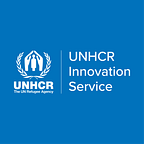UNHCR’s Innovation Service launches new publication on what humanitarian innovation looks like in practice.
In the humanitarian and innovation communities, the collective sense of urgency reached new heights this year. Never before has innovation been so important in light of growing needs and fewer resources.
Whilst new technologies and platforms continued to advance, we refocused our efforts to the future. Experimentation, research, and refugee voices were central to the new direction. We continued to argue that innovation did not, and does not, equate technology. UNHCR’s Innovation Service was instead focused on behaviour and mindset change — a small nudge team interested less in drones and more in better decision-making.
2017 was also the year that we killed our Innovation Labs and invested in a more holistic approach to innovation, diversity, and collaboration in a way that we hadn’t before. This past year, our programmes and trainings gave UNHCR staff the opportunity to innovate and test new projects and processes across the world. The availability (or lack thereof sometimes) of data continues to have a profound impact on our work at the Innovation Service.
If you were to look at the themes found in our year in review, they would be focused on data, storytelling, listening, predicting, and monitoring. In our new publication, we’ve highlighted these themes through stories from the field, stories from refugees, stories on failure, stories on where we’ve been and a look at where we’re going. From research to organisational change, and experiments, take a look back at what UNHCR’s Innovation Service was up to in 2017.
Discover predictions for 2018, our diversity statistics, and more stories on our Year in Review microsite here.
You can download the entire publication UNHCR Innovation Service in 2017: year in review here.
